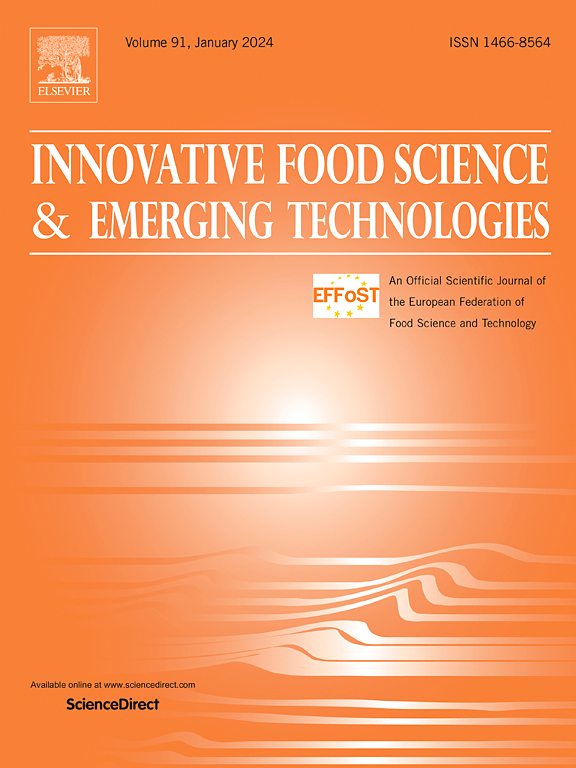Superhydrophobic surfaces: A promising strategy for addressing food industry challenges
IF 6.3
1区 农林科学
Q1 FOOD SCIENCE & TECHNOLOGY
Innovative Food Science & Emerging Technologies
Pub Date : 2024-12-09
DOI:10.1016/j.ifset.2024.103899
引用次数: 0
Abstract
Due to the extremely low surface energy and unique structural properties, superhydrophobic surfaces exhibit exceptional water repellent, self-cleaning, anti-adhesion properties. These characteristics have led to their widespread application across various fields such as textiles, construction, and healthcare with notable success. The inherent properties of superhydrophobic surfaces make them promising candidates for addressing challenges like the control of microbial contamination on food surfaces, the separation of oil-contaminated wastewater in the food industry, and the reduction of residual liquid food on container surfaces. In recent years, researchers have shown significant interest in exploring the potential applications of superhydrophobic surfaces in food packaging, food machinery, oil-contaminated wastewater separation, and food freezing/refrigeration equipment. In order to facilitate researchers in the food field to systematically comprehend superhydrophobic surfaces and thoroughly consider their potential application and value in the realm of food, this paper initially presented the fundamental theory of superhydrophobic surfaces, elaborated on various fabrication methods along with their specific applications in the food field, and ultimately discussed the challenges encountered during practical application while proposing future prospects within the food industry.

求助全文
约1分钟内获得全文
求助全文
来源期刊
CiteScore
12.00
自引率
6.10%
发文量
259
审稿时长
25 days
期刊介绍:
Innovative Food Science and Emerging Technologies (IFSET) aims to provide the highest quality original contributions and few, mainly upon invitation, reviews on and highly innovative developments in food science and emerging food process technologies. The significance of the results either for the science community or for industrial R&D groups must be specified. Papers submitted must be of highest scientific quality and only those advancing current scientific knowledge and understanding or with technical relevance will be considered.

 求助内容:
求助内容: 应助结果提醒方式:
应助结果提醒方式:


